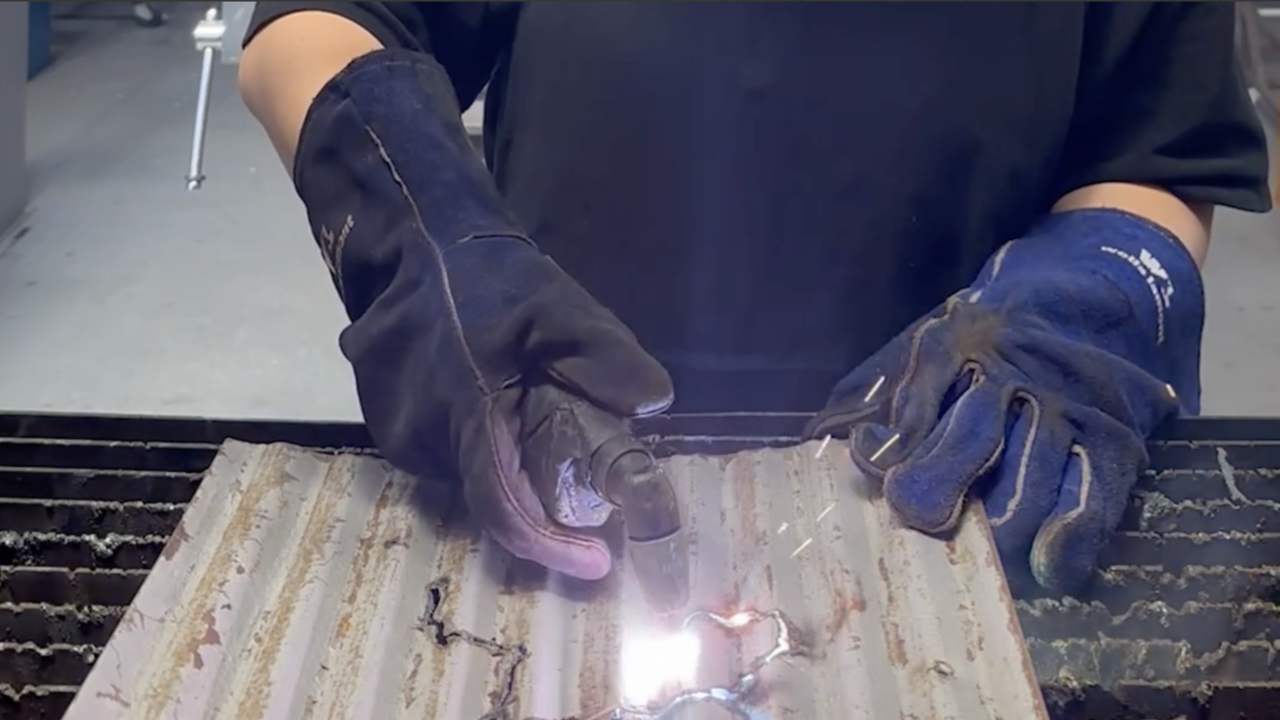Game On
Film's tortured relationship with the videogame
Film's tortured relationship with the videogame
In 1993 Hollywood had its fingers burnt in a motion picture endeavour which should have raked in millions, but ended up losing a fortune. The film was Super Mario Brothers, a big-budget adaptation of the hugely successful Nintendo videogame series. Four years previously, the third game in the repertoire sold seven million copies in the US alone and, by 1990, Mario was more widely recognised than Mickey Mouse among American children. With an apparently guaranteed audience of this size, the film's producers could perhaps be forgiven for thinking they had a certain hit. They didn't. The film bombed both commercially and critically, and, typically, no one learned from the example. Since 1993, the US has produced further videogame-based movies, including Double Dragon, Street Fighter: The Movie, and Mortal Kombat, none of which performed anywhere near as well as the games they were adapted from.
Why did these films fail so convincingly? The main reason is that Hollywood completely misunderstood the nature of the videogame. Super Mario Brothers was never going to work as straightforward live-action - the Mario Brothers' game world is too surreal and formless. The series' creator, Shigeru Miyamoto, took his inspiration from fairy tales, from Alice In Wonderland, from his own childhood daydreams, and consequently the games evoke a sense of childlike wonder. No one is quite sure why Rocky Morton took this material and turned it into a brash futuristic action film starring Dennis Hopper.
The makers of Street Fighter: The Movie et al displayed a similar incomprehension of their original material. Without exception, these were action films put together by lower-echelon production companies who bought the rights to the characters believing this would be enough to sell the films. However, Japanese fighting games, such as Street Fighter and the Tekken series, are invariably based on complex mythologies: behind the line-up of characters are labyrinthine relationships and bitter feuds. The fighting styles are accurately based on real martial arts, and the way each character uses these reflects their status and moral persuasion within the game's pantheon - more the stuff of Akira Kurosawa than Jean Claude Van Damme.
Despite these past failures, videogames are again becoming hot Hollywood property - film versions of Tomb Raider, Resident Evil, Wing Commander, Duke Nukem and Doom are all in various stages of production. But this time things may be different: over the last five years, the software industry has undergone a change in direction, with more and more game designers taking their inspiration from the cinema. This trend can be traced back to the early 90s when the introduction of CD-ROM offered developers huge amounts of space to store cinematic sequences on their game discs. These either took the form of animated films created on high-end Silicon Graphics workstations, or actual photographic movie clips. (The latter fell out of favour quickly, thanks to the wretched influx of 'Interactive Movies' like Voyeur and Night Trap between 1991 and 1993.)
Unfortunately, the relationship between hi-end CGI scenes and the games themselves was often stilted. The animations set the scene at the beginning of a game and cut in at the start of each new stage to reveal information to the player, but there was a huge shift in visual quality at each transition. In the first Tomb Raider, for example, the Lara of the prerendered sequences is a detailed 3-D model, lushly textured and well-proportioned, while the controllable Lara of the game was a simplistic low-polygon model bearing little resemblance to the fantasy figure already forming in a million games players' minds. (In Command and Conquer the full-motion video mission briefings had so little to do with the game that most players simply skipped them all.) But these early experiments with animated movie sequences gave movie-buff designers a chance to play with camera angles, lighting and dialogue, despite the massive gap in quality between movie and in-game visuals.
However, the last few years have seen the introduction of powerful graphics accelerator cards for the PC and a growing technical understanding of the next-generation consoles. In-game visuals are becoming so accomplished that developers have begun to move away from conspicuous FMV sequences toward the RTM (real-time movie) - a non-interactive animated sequence which uses the live 3-D engine, character models and backgrounds, instead of loading up a pre-rendered movie. RTMs are also starting to be used during the game to develop plot and atmosphere.
There is now a new wave of extremely cinematic games which switch almost imperceptibly between player-controlled action and animated movie scenes. In the role-playing game Final Fantasy VII, for example, RTMs cut in every time the player casts a spell or summons a demon - the effects are extraordinarily beautiful but never annoyingly intrusive. Likewise, in Konami's recent spy-based adventure Metal Gear Solid, gameplay intercuts with movie sequences in a dizzying interactive spectacle. After a false start, the 'Interactive Movie' is truly coming into its own as a viable entertainment medium. Games are now being designed from the ground up with film in mind: Resident Evil, with its skewed camera angles and unremitting tension, owes more to George Romero's Living Dead trilogy than just its storyline; the elaborately violent set pieces of Time Crisis took a few hints from John Woo, Sam Peckinpah and countless US action films. As a result, players are beginning to see games as visual 'experiences'. They are becoming more like filmgoers.
Another lesson learned from movies is the intrinsic importance of characterisation. No one ever played Super Mario Brothers and wondered why an Italian plumber was being attacked by turtles in a fluffy, comic book world, but most Lara Croft fans know where she grew up and what happened to her parents - these personal details are integral to the storyline. Lara is a truly cinematic character - her adventures are epic yet realistic, and she is, for all intents and purposes, a female Indiana Jones. Although gamers will not be able to control her when she reaches the cinema screen, they know enough intimate information to accept her as a cinematic entity - in a way that Mario fans did not.
So, games are becoming films, but at the same time films are becoming games. This year's summer blockbusters - Lost in Space, Godzilla and Armaggedon - relied heavily on computer effects set pieces, and the people who created them use the same hardware and software tools as videogame developers. As Nick Bolton at motion capture company Oxford Metrics points out, 'Products like PowerAnimator, Maya and 3DS MAX are all in use by both games artists and film effects companies. There is only a finite amount of flexibility in any of these packages, so everyone has the ability to turn out a similar level of quality'. Technology has become such an important part of both industries that companies and individuals are able to flow imperceptibly between the two. Canadian animation outfit Mainframe converted ReBoot, its own successful CGI cartoon series, into a videogame; Oxford Metrics provide software for both movie and game production; CG artists move from Disney to videogame companies and vice versa. Soon movie to videogame conversions will paste the CGI sequences used in the film directly into the game. Where once there was a visual chasm between videogame and film, now there is a narrowing line and audience perceptions of both will inevitably evolve in unison.
Videogame publishing house Interplay has gone so far as to set up a film production studio to pitch its games to Hollywood. Similarly, Japanese videogame giants Square and Namco are working on animated film adaptations of their own hits, while George Romero enjoyed directing the three minute ad for Resident Evil 2 so much that he signed up to make the feature. Unlike the motley crew behind Super Mario Bros, at least he understands the source material. All along film-makers have known what videogame designers are only just discovering - that creating a palpable emotional connection between viewer and character is one of the most vital and powerful elements of mass entertainment. With Final Fantasy VII that process has already begun, and when videogames learn to induce an emotional, cathartic response from their players then their journey toward the cinematic will be complete.
















